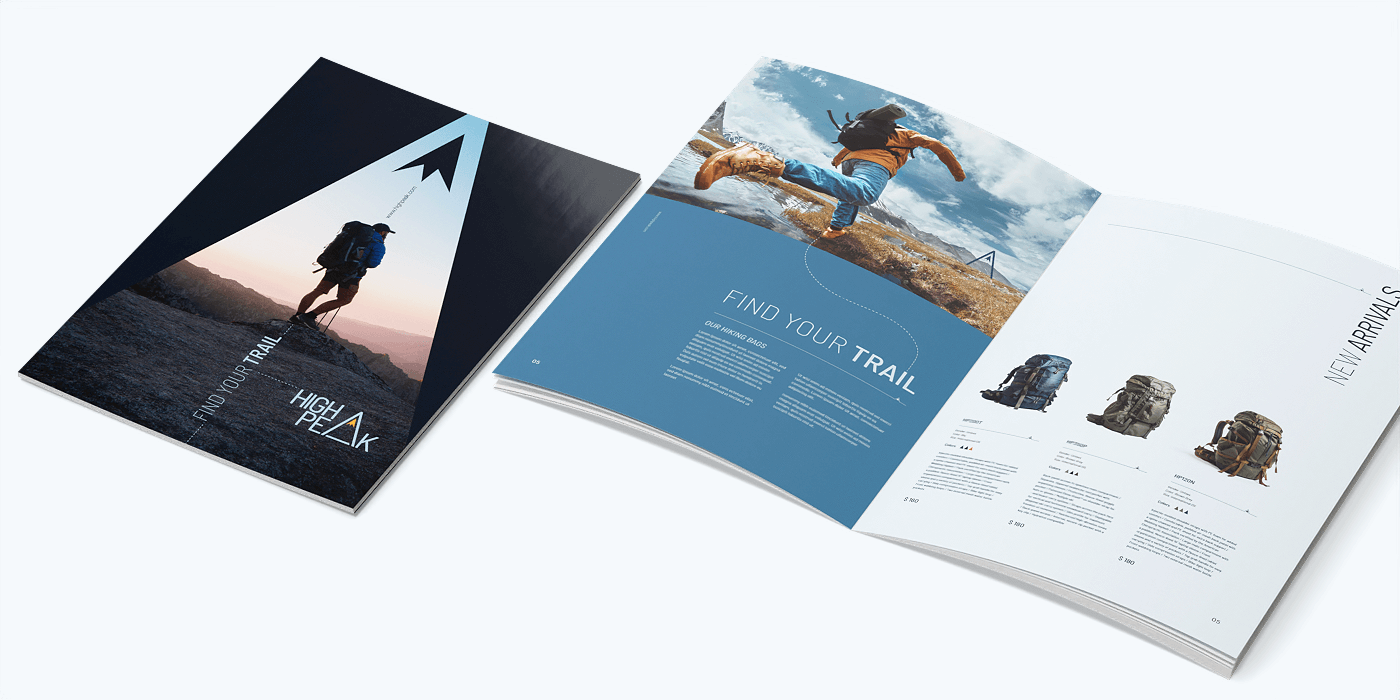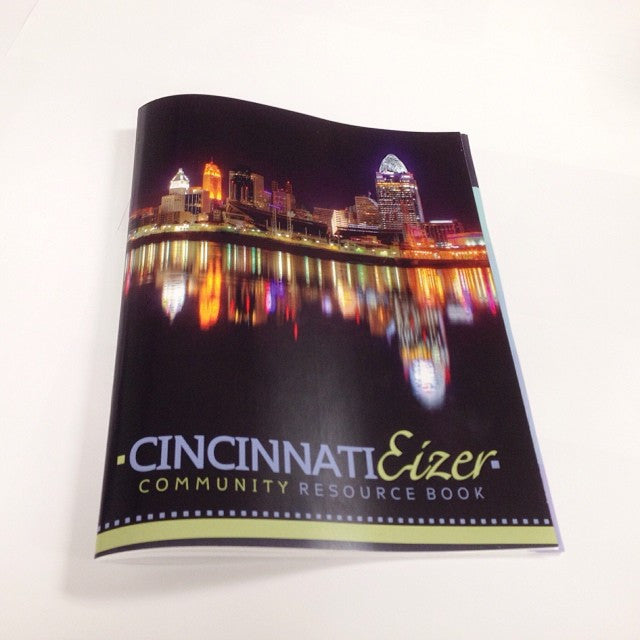Booklet Printing FAQs: Everything You Need to Know Before You Order
Booklet Printing FAQs: Everything You Need to Know Before You Order
Blog Article
The Necessary Guide to Comprehending Pamphlet Printing Options and Techniques
The process of pamphlet printing includes numerous factors to consider that can significantly influence the end product. From picking the appropriate style and dimension to comprehending the subtleties of binding techniques, each option plays an important duty. Additionally, aspects such as paper stock and printing strategies more influence the efficiency of the booklet. As one browses these choices, it comes to be important to comprehend how they adjoin and what that means for the overall end result.
Comprehending Booklet Sizes and layouts
When taking into consideration pamphlet printing, recognizing the various layouts and sizes readily available is vital for accomplishing the preferred discussion. Pamphlets can be produced in countless formats, including saddle-stitched, spiral-bound, and perfect-bound, each offering distinct advantages. Usual sizes range from standard letter (8.5 x 11 inches) to smaller alternatives like A5 (5.8 x 8.3 inches), allowing for flexibility based upon content and target audience.Selecting the suitable dimension can influence both the design and reader interaction. Bigger dimensions could suit visually driven material, while smaller sized styles may be much more portable and straightforward. In addition, the number of pages impacts the choice of binding method, as thicker pamphlets might need tougher bindings. Ultimately, understanding these aspects permits an extra customized technique, ensuring that the end product lines up with the designated message and aesthetic, enhancing the general efficiency of the interaction.
Picking the Right Paper Supply

Binding Techniques: Choices and Considerations
When it comes to binding methods for booklets, numerous choices are offered, each with unique advantages. Saddle stitch binding provides an affordable remedy for thinner booklets, while perfect binding techniques offer an even more polished try to find thicker publications. Wire-O binding stands out for its toughness and ease of usage, making it excellent for files that call for adaptability.
Saddle Stitch Binding
Saddle stitch binding offers a economical and practical solution for assembling pamphlets, making it a popular selection among authors and services. This binding method entails folding sheets of paper in half and stapling them along the fold line, developing a cool and well organized appearance. Normally ideal for booklets with a reduced web page matter, saddle sewing is optimal for magazines, sales brochures, and training products. The simpleness of this strategy permits fast manufacturing and is commonly favored for marketing things or brief runs. However, it is necessary to keep in mind that saddle stitch binding may not appropriate for thicker brochures, as the back may not stand up under enhanced weight. In general, it remains a dependable alternative for lots of printing projects.
Perfect Binding Techniques
Perfect binding is an extensively made use of strategy that provides a professional and polished coating to publications and pamphlets. This technique includes gluing the web pages with each other at the back making use of a strong adhesive, permitting a clean edge and the capacity to hold a bigger variety of pages contrasted to saddle sewing. Perfect binding is especially suitable for thicker pamphlets, such as brochures and yearly records, where a tough, level spine is preferred. Additionally, it uses the choice for a published cover that can be designed to enhance aesthetic appeal. Considerations such as page count, paper weight, and the meant usage of the booklet must be taken into account, as they can affect longevity and total high quality.
Wire-O Binding Choices
Wire-O binding, understood for its toughness and adaptability, provides an exceptional alternative for brochures that require easy page turning and a specialist look. This binding technique utilizes a series of steel loops that hold pages firmly, enabling them to lie level when open. It is specifically suitable for manuals, discussions, and brochures because of its durable nature. Wire-O binding is offered in different shades and diameters, suiting different page counts and densities. Additionally, it allows the incorporation of covers and tabs, improving the booklet's overall visual. Factors to consider for Wire-O binding include the option of cable shade, the dimension of the loopholes, and the extent of customization wanted, all of which can greatly affect the end product's look and functionality.
Digital vs. Offset Printing: Which Is Best for You?
When selecting a printing method for brochures, recognizing the differences in between digital and offset printing is necessary. Digital printing utilizes modern-day technology to generate high-quality prints quickly and economically, making it suitable for short runs or projects needing fast turn-around times. It enables for modification, supplying the capability to print on-demand with minimal waste.In comparison, counter printing is a traditional technique that masters creating large amounts with regular quality. It involves transferring ink from a plate to a rubber blanket, then to the paper, which results in specific details and lively colors. Nevertheless, counter printing typically requires longer configuration times and is a lot more cost-effective for larger volumes.Ultimately, the choice between digital and balance out printing look at here now relies on job demands, spending plan, and wanted amount. For small, time-sensitive tasks, electronic could be the most effective selection, while balanced out might be more effective for bigger, premium manufacturings.

Designing Your Pamphlet: Tips and Ideal Practices
When creating a pamphlet, careful attention to design, font option, and shade use can considerably improve its efficiency. A well-structured layout overviews the visitor's eye, while proper font styles assure readability and communicate the desired tone. In addition, efficient use shade can evoke emotions and highlight key info, making the overall style much more impactful.
Selecting the Right Design
Just how can one efficiently select the ideal layout for a booklet? Initially, it is necessary to examine the pamphlet's function and target audience. A clean, organized format enhances readability and involvement. Making use of a grid system can aid in straightening components consistently, developing a specialist look. In addition, incorporating visual hierarchy through differing sizes and placements of pictures and message can guide the visitor's eye and highlight key info. It is also essential to leave enough white room, which avoids overcrowding and enables much better focus. Finally, examining different layouts with mock-ups can provide understanding right into just how the style carries out in real-world circumstances, ensuring that the last item fulfills both useful and aesthetic needs.
Choosing Suitable Font Styles
A well-chosen font style can significantly enhance the overall design of a booklet, complementing the design and strengthening the material's message. The choice of font styles need to take into consideration readability, particularly for body message, as it assures the info comes to all readers. Sans-serif font styles are frequently favored for digital layouts, while serif font styles can offer a standard feel in printed materials. It's advisable to limit font choices to two or 3 to maintain aesthetic comprehensibility. Furthermore, font size plays a crucial duty; headings must be distinctive but not frustrating, while body message must fit for reading. When picking typefaces, placement with the pamphlet's style and target audience is necessary for efficient interaction and visual charm.
Effective Usage of Color
Color offers as a powerful device in booklet layout, directing and forming perceptions reader emotions. It can evoke sensations of exhilaration, depend on, or calmness, relying on the hues selected. Developers visit homepage need to consider color theory principles, ensuring that the picked combination straightens with the pamphlet's message and target market. As an example, using cozy shades like red and orange can create urgency, while cooler tones like environment-friendly and blue foster tranquility.Additionally, contrast plays an essential role; corresponding shades can enhance readability and aesthetic charm. Consistency in color usage across web pages better enhances brand name link identification and cohesion. Eventually, efficient color execution not just records attention but likewise strengthens the pamphlet's purpose, making it a necessary aspect of effective layout.
Ending Up Touches: Coatings and Special Effects
While many think about the web content and format of a booklet the most crucial elements, the ending up touches, such as coverings and unique results, play a necessary duty in boosting its general appeal. Coatings can supply defense and durability, making certain that the booklet stands up to deterioration. Matte surfaces offer an advanced, non-reflective surface, while glossy finishings can make shades show up more dynamic and captivating. Unique results, like embossing or aluminum foil marking, include a responsive dimension that can produce an unforgettable impression. These techniques can highlight certain areas, accentuating vital info or developing visual passion. In addition, UV coating can provide a high-shine finish that raises the overall look.Together, these finishing touches not just improve the booklet's visual however also communicate expertise and attention to detail, inevitably leaving a long-term effect on the reader.
Expense Considerations for Brochure Printing
Comprehending the different price considerations for brochure printing is vital for services and organizations intending to maximize their budget plans. Key elements influencing prices consist of the selection of paper, ink, and binding techniques. Better products, such as premium paper or specialized inks, generally increase the total expenditure. Furthermore, the dimension and web page matter of the pamphlet play a substantial duty; bigger pamphlets call for even more sources and time to produce.Another crucial consideration is the printing method, whether digital or countered, as each has its own pricing structure and suitability for different amounts. Businesses need to also consider design expenses, which can differ based upon complexity and the use of expert solutions. Ultimately, shipping and handling costs can include to the overall, specifically for big orders. By evaluating these aspects, organizations can make educated decisions that straighten with their monetary capacities while attaining the preferred high quality in their printed products.
Regularly Asked Questions
What Are the Environmental Effects of Booklet Printing?
The environmental influences of brochure printing consist of deforestation from paper manufacturing, carbon discharges from transport, and waste generation from thrown out products - Booklet Printing. Sustainable methods, such as utilizing recycled paper and green inks, can alleviate these effects
Exactly How Can I Guarantee Color Precision in My Pamphlet?
To guarantee shade accuracy in a booklet, one should use calibrated monitors, employ professional color accounts, perform examination prints, and pick top quality printing solutions that provide shade matching and proofing choices for best results.
What Is the Common Turnaround Time for Booklet Printing?
The normal turnaround time for brochure printing differs relying on the complexity and quantity - Booklet Printing. Typically, it varies from a few days to two weeks, affected by variables such as publishing approaches and ending up demands
Are There Minimum Order Quantities for Booklet Printing?

Can I Publish Booklets in Several Languages?
Printing pamphlets in several languages is possible. Lots of printing solutions supply options for multilingual or multilingual formats, allowing for efficient communication. Mindful planning guarantees that develop aspects suit numerous languages without endangering readability or appearances. Additionally, factors such as paper supply and printing techniques more affect the performance of the booklet. When thinking about pamphlet printing, understanding the numerous styles and sizes offered is crucial for attaining the preferred presentation. When choosing a printing approach for brochures, comprehending the distinctions in between electronic and balance out printing is crucial. Furthermore, the size and web page matter of the pamphlet play a significant duty; bigger pamphlets call for more resources and time to produce.Another important consideration is the printing technique, whether digital or balanced out, as each has its very own rates structure and viability for different quantities. The environmental influences of pamphlet printing include deforestation from paper production, carbon exhausts from transport, and waste generation from discarded products.
Report this page